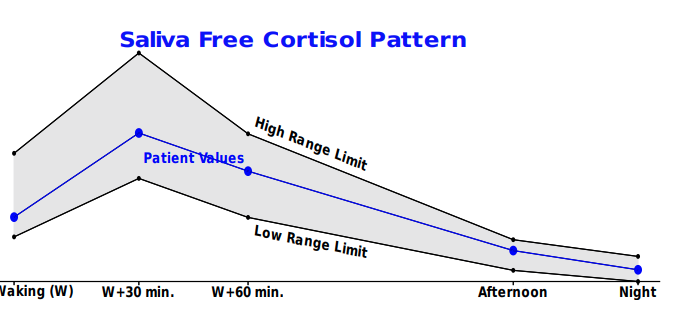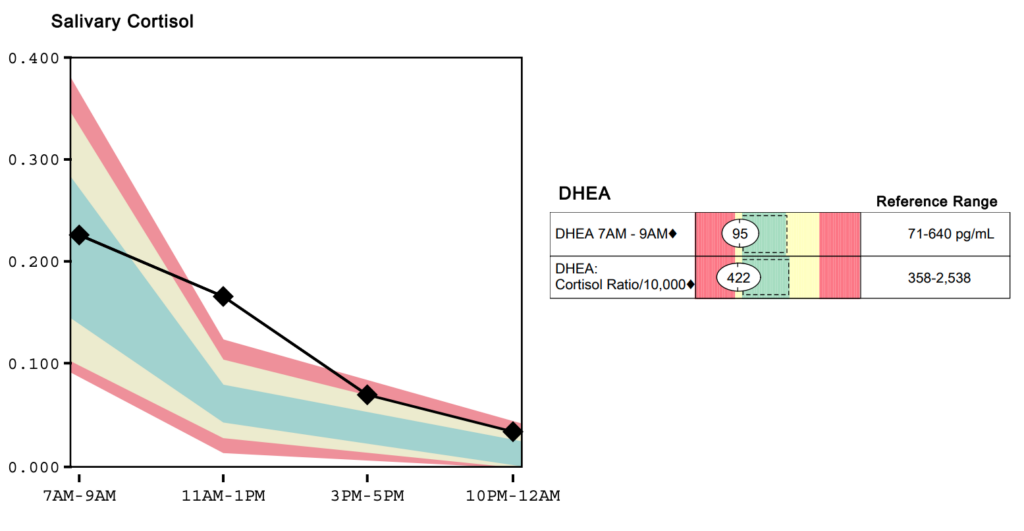
Adrenal Dysfunction
Adrenal dysfunction is something I see COMMONLY in my practice. In today’s go-go-go society, chronic stress permeates most of our lives. Our adrenals, which are two small glands that sit atop the kidneys, try to keep up with the stress by secretion of cortisol. This is a good thing in an acute emergency – we want the adrenal stress response to send blood to our muscles, increase our heart rate, and improve our vision but this is counterproductive when it is happening every day when we are running late, stuck in traffic, or watching the news. If left unchecked for too long our adrenals start to show signs of overcompensation and dysfunction. And what many people may not realize is that our adrenals are our master hormone regulators. If they are not functioning well, our thyroid and sex hormones will not be optimal either.
Stages of Adrenal Dysfunction
The stages of adrenal dysfunction are described in Selye’s General Adaptation Syndrome and we will see these stages play out in both symptomatology and labs.
Stage 1: This stage is considered the alarm or adaptation stage where both cortisol and DHEA are typically elevated (though DHEA can remain normal). This is our acute stress response and as long as our stress decreases then we can recover back to baseline.
Stage 2: This is when resistance and early decompensation begin to occur. With this stage we see elevated cortisol and a normal or low DHEA. We often see a “tired but wired” picture here with fatigue mixed in.
Stage 3: This is the exhaustion phase where cortisol and DHEA are low and profound fatigue can set in.
So how do we test for adrenal dysfunction?
The best is a salivary cortisol profile with multiple points throughout the day – typically upon wakening, midday, mid-afternoon and before bedtime (sometimes more). When the results come back we get a cortisol curve as shown below.

This is a normal cortisol curve

This cortisol curve represents stage 2 dysfunction.
So, what contributes to HPA Axis Dysfunction?
Most people think of stress in the form of a stressful day of work or a stressful week because the kids were sick and while these external factors that we classically think of stress do matter there are many hidden sources of stress that affect the HPA Axis that we may not even realize. The list below shows the many causes of stress that can affect our adrenals and when added up creates our Allostatic load or the cumulative burden of chronic stress and life events.
- Trauma
- Food allergies/sensitivities
- Dysbiosis/microbiota imbalance
- Toxins (environment OR toxic relationships)
- Hormone imbalances
- Insulin resistance
- Oxidative stress
- Exercise (yes! Exercise is a good stress but sometimes too much can be detrimental. More on this later)
- Infections
- Nutrient deficiencies
- Pharmaceuticals
- EMFs
- Sleep disorders or poor quality sleep
Effects of Chronic Stress
The effects of chronic cortisol stimulation from unending stress can include:
- Weight gain (specifically central/visceral adipose tissue)
- Increased blood pressure / heart disease
- Depression / anxiety
- Suppression of the immune system
- Memory loss
- Increases in blood sugar
- Demineralization of the bones
- Increased perception to pain
In the next couple of weeks we will go over what we can do to combat the chronic stress of day to day life through lifestyle interventions, nutrition, vitamins & minerals and adaptogens! We’ll also touch on the perception of stress and how that plays a role. Stay tuned!
If any of the above resonates with you and you want a partner in your healthcare, book a free 15 minute consultation below! For more about Wild Rice Wellness click HERE!
